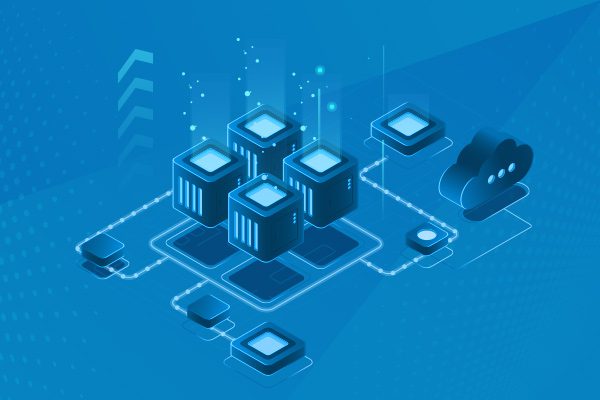Exploring Event Log Monitoring Tools: Enhancing Security and Operational Insights

In the digital landscape of modern organizations, event log monitoring plays a pivotal role in ensuring robust security posture, operational efficiency, and regulatory compliance. Event log monitoring tools empower businesses to collect, analyze, and respond to critical events generated across their IT infrastructure in real-time. By proactively monitoring event logs, organizations can detect security incidents, troubleshoot operational issues, and mitigate risks before they escalate. In this comprehensive guide, we delve into the realm of event log monitoring tools, elucidating their significance, key functionalities, benefits, challenges, and the broader implications for security and operations in today&8217;s dynamic business environment.
Event log monitoring tools serve as the sentinels of organizational integrity, continuously scanning the digital landscape for indicators of compromise, anomalous activities, and operational irregularities. These tools are designed to ingest vast volumes of event log data generated by diverse sources within an organization&8217;s IT ecosystem, including servers, workstations, network devices, applications, and security appliances. By centralizing and analyzing event logs in real-time, organizations gain unparalleled visibility into their digital footprint, enabling proactive threat detection, incident response, and forensic analysis.
Key Functionalities of Event Log Monitoring Tools: Unleashing Actionable Insights
Event log monitoring tools offer a myriad of functionalities tailored to the unique needs of security and operations teams:
Log Collection and Aggregation: Event log monitoring tools collect and aggregate event logs from disparate sources across the organization, providing a unified view of the IT environment. These tools support a wide range of log formats and protocols, allowing seamless integration with diverse platforms and devices.
Real-Time Analysis and Correlation: Event log monitoring tools analyze event logs in real-time, applying advanced correlation algorithms to identify patterns, trends, and anomalies indicative of security threats or operational issues. By correlating events across multiple sources, these tools can uncover sophisticated attack vectors and systemic vulnerabilities.
Alerting and Notification: Event log monitoring tools provide customizable alerting and notification mechanisms to alert security and operations teams of critical events or policy violations. Alerts can be configured based on predefined rules, thresholds, or anomaly detection algorithms, ensuring timely response and remediation.
Forensic Investigation and Reporting: Event log monitoring tools support forensic investigation and reporting capabilities, enabling security teams to reconstruct the timeline of events, trace the origins of security incidents, and generate comprehensive audit trails for regulatory compliance purposes.
Compliance Monitoring and Auditing: Event log monitoring tools facilitate compliance monitoring and auditing by providing predefined compliance templates, reports, and dashboards for regulatory frameworks such as PCI DSS, HIPAA, GDPR, and SOX. These tools help organizations demonstrate adherence to regulatory requirements and industry best practices.
Benefits of Event Log Monitoring Tools: Safeguarding Organizational Resilience
Event log monitoring tools offer a plethora of benefits for organizations seeking to fortify their cybersecurity defenses and streamline their operational workflows:
Early Threat Detection: By continuously monitoring event logs for suspicious activities, event log monitoring tools enable organizations to detect security threats in their infancy, preventing potential breaches or data exfiltration.
Operational Visibility: Event log monitoring tools provide comprehensive visibility into the operational health and performance of IT systems, allowing organizations to identify bottlenecks, optimize resource utilization, and streamline business processes.
Rapid Incident Response: With real-time alerting and notification capabilities, event log monitoring tools empower security teams to respond swiftly to security incidents, minimizing the impact on business operations and reducing mean time to detect (MTTD) and mean time to respond (MTTR) metrics.
Compliance Assurance: Event log monitoring tools help organizations achieve and maintain regulatory compliance by facilitating continuous monitoring, auditing, and reporting of security-related events and activities.
Enhanced Forensic Capabilities: Event log monitoring tools support forensic investigation and incident response by providing granular visibility into event logs, enabling security teams to conduct root cause analysis, identify attack vectors, and mitigate security risks effectively.
Challenges and Considerations: Navigating the Complexity
Despite the numerous benefits, organizations may encounter several challenges and considerations when implementing event log monitoring tools:
Data Overload: The sheer volume of event log data generated by IT systems can overwhelm event log monitoring tools, leading to false positives, alert fatigue, and missed detections. Organizations must fine-tune alerting thresholds, prioritize critical events, and leverage advanced analytics techniques to reduce noise and improve signal-to-noise ratio.
Resource Intensiveness: Implementing and managing event log monitoring tools require significant investments in terms of personnel, technology infrastructure, and ongoing maintenance. Organizations must allocate sufficient resources and budgetary allocations to support the deployment, operation, and optimization of event log monitoring solutions.
Integration Complexity: Integrating event log monitoring tools with existing security information and event management (SIEM) systems, incident response workflows, and ticketing systems can be complex and challenging. Organizations must ensure seamless integration and interoperability to maximize the value and effectiveness of event log monitoring tools.
Skill Shortages: Event log monitoring requires specialized skills in cybersecurity, data analysis, and incident response. Organizations may face challenges in recruiting and retaining skilled personnel to operate and manage event log monitoring tools effectively.
Regulatory Compliance: Achieving and maintaining regulatory compliance requires ongoing monitoring, auditing, and reporting of security events and activities. Organizations must ensure that event log monitoring tools support compliance requirements for regulatory frameworks such as PCI DSS, HIPAA, GDPR, and SOX.
The Future of Event Log Monitoring: Embracing Innovation
As organizations continue to grapple with evolving cybersecurity threats, regulatory requirements, and operational challenges, the role of event log monitoring will only become more critical. By investing in advanced event log monitoring tools, leveraging automation and machine learning technologies, and adopting best practices for event log management, organizations can enhance their security posture, streamline their operational workflows, and maintain trust with customers and stakeholders. As the digital landscape evolves and threats continue to evolve, organizations that prioritize event log monitoring as a cornerstone of their cybersecurity strategy will be better positioned to detect, respond to, and mitigate emerging threats effectively.
